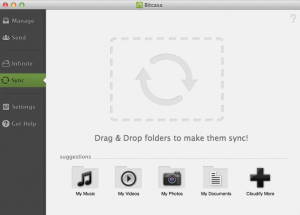 Is your business ready to make its first hire? Finding and hiring the right employee is a critical step in the process. However, there are a few other steps you’ll need to take to ensure you meet the legal, regulatory and tax obligations of being a new employer.
Is your business ready to make its first hire? Finding and hiring the right employee is a critical step in the process. However, there are a few other steps you’ll need to take to ensure you meet the legal, regulatory and tax obligations of being a new employer.
In California many employment related tasks, including some of those listed below can be done from the Employment Development Department’s e-Services for Business page.
For California businesses about to become employers, here’s a checklist of the things you’ll need to do either before, or soon after you make that first hire:
1. Apply for an Employee Identification Number
Many businesses operate without an Employer Identification Number (or EIN), but if you hire employees, you’re going to need one. Think of it as the social security number equivalent for employers. An EIN is used to report the taxes you withhold on behalf of employees. You can apply for an EIN online from the IRS during their hours of operation Monday through Saturday. Apply for an EIN online.
2. Set-Up Withholding Taxes
Either on or before the date of employment, you’ll need to give your employee a copy of IRS Form W-4, to fill out and hand back to you so that you can withhold the correct federal income tax from their pay. To help you figure out what you should be withholding, refer to the IRS’ Employer’s Tax Guide(for use in 2012). Most California employees use the same number of Federal withholding allowances for their state income tax withholding. But under certain circumstances, especially if a person has income from multiple sources, they will want to use Employment Development Department Form DE-4 to determine if they should use a different number for their state withholding.
3. Verify That Your Employee is Eligible to Work in the U.S.
Employers are required to ensure their workforce is legal, and must verify each employee’s legal right to work in the United States within three days of the hire date. Go the U.S. Citizenship and Immigration Services website if you need to learn more about this process. Mainly, you will need to examine acceptable forms of ID presented by the employee and complete the Employment Eligibility Verification Form (I-9), and then verify the data on the form with the U.S. Citizenship and Immigration Services’ E-Verify online tool. You don’t need to file the form; just keep it on file for three years after the hire date, and one year after a termination date.
4. Register with the New Hire Reporting Program
Within 20 days of the hire date, you must report all new hires to the Employment Development Department’s New Employee Registry. The easiest way to satisfy this requirement is to fill out and submit a Report of New Employee(s) Form DE-34. Actually you can submit the necessary information in any format you like, as long as it’s all there. Some employers just add the employee’s start date and their California employer account number and the Federal employer ID number to the W-4 and send that.
5. Obtain Workers’ Compensation Insurance
In California, once you have employees you are required to carry worker’s compensation insurance. The insurance is available through commercial insurance carriers, on a self-insured basis, or through your state’s program and is considered a cost of doing business. If you need a referral to a commercial insurance agent who will help you minimize this cost, email me at doug@solidgrowth.com.
6. Unemployment Insurance Tax (UI), Employment Training Tax (ETT), and State Disability Insurance (SDI) for 2012
The UI program is part of a national program administered by the U.S. Department of Labor under the Social Security Act. The UI program provides temporary payments to individuals who are unemployed through no fault of their own.
UI is paid by the employer. Tax-rated employers pay a percentage on the first $7,000 in wages paid to each employee in a calendar year. The UI rate schedule and amount of taxable wages are determined annually. New employers pay 3.4 percent (.034) for a period of two to three years. EDD notifies employers of their new rate each December. The maximum tax is $434 per employee per year. (Calculated at the highest UI tax rate of 6.2 percent x $7,000.)
New employers are assigned a 3.4 percent UI tax rate for a period of two to three years. This will depend on when you meet the criteria under Section 982(b) of the California Unemployment Insurance Code (CUIC). If you purchased an established business, you have the option of acquiring the previous owner’s UI tax rate (see purchasing a Business with Employees).
The Employment Training Tax (ETT) rate for 2012 is 0.1 percent. The UI and ETT taxable wage limit remains at $7,000 per employee per calendar year.
The State Disability Insurance (SDI) withholding rate for 2012 is 1.0 percent. The taxable wage limit is $95,585 for each employee per calendar year. The maximum to withhold for each employee is $955.85.
The UI, ETT, and SDI tax rates are combined on a single rate notice, Notice of Contribution Rates and Statement of UI Reserve Account (DE 2088). The DE 2088 will be mailed to you in December, with a mailing date of December 30. Employers will have 60 days from the December 30 mailing date to protest any item on the DE 2088 except SDI and ETT, which are specifically set by law.
7. Display Workplace Posters
Check with the Department of Labor’s “Poster Advisor” online tool to see which posters you need to display that explain employee rights, etc. To determine what posters are requited of you in California check the Department of Industrial Relations Workplace Postings site.
8. Filing Taxes as an Employer
It’s a good idea to talk to your accountant or tax advisor about your new tax obligations. Typically, you’ll need to report income tax withholding, social security, and Medicare taxes each quarter on the IRS Form 941. If you paid wages of $1,500 or more in any quarter or had an employee on the payroll for any 20 weeks of the year, you’ll also need to file an Employer’s Annual Federal Unemployment (FUTA) return.
To see what applies to you, read the IRS Employer’s Tax Guide.
9. Keep Good Records and Stay Informed on Employment Laws
Once your employee is on board, make sure you maintain good employee records, pay close attention to workplace health and safety laws, and understand what benefits you must establish by law. Each of the following links will provide useful guides and tools that can help you stay compliant.
Labor Recordkeeping Requirements
Occupational Safety and Health Act (OSHA)
Fair Labor Standards Act (FLSA)
Family and Medical Leave Act (FMLA)
Equal Employment Opportunity Commission
Employee Handbook information
If you will be providing benefits to your employees, you should become familiar with the uniform minimum standards required by federal law to ensure that employee benefit plans are established and maintained in a fair and financially sound manner. See the chapter on Employee Benefit Plans in the U.S. Department of Labor’s Employment Law Guide for more information.
 It’s not just entrepreneurs who have come to the realization that exhaustive business plans may be overrated. Venture capitalists, angel investors and bankers are also in favor of stripping down such documents. Many say they simply have no time to read a 100-page plan, even if they were so inclined, and that there is little value after the first few pages.
It’s not just entrepreneurs who have come to the realization that exhaustive business plans may be overrated. Venture capitalists, angel investors and bankers are also in favor of stripping down such documents. Many say they simply have no time to read a 100-page plan, even if they were so inclined, and that there is little value after the first few pages.

 Infinite
Infinite Sync
Sync



